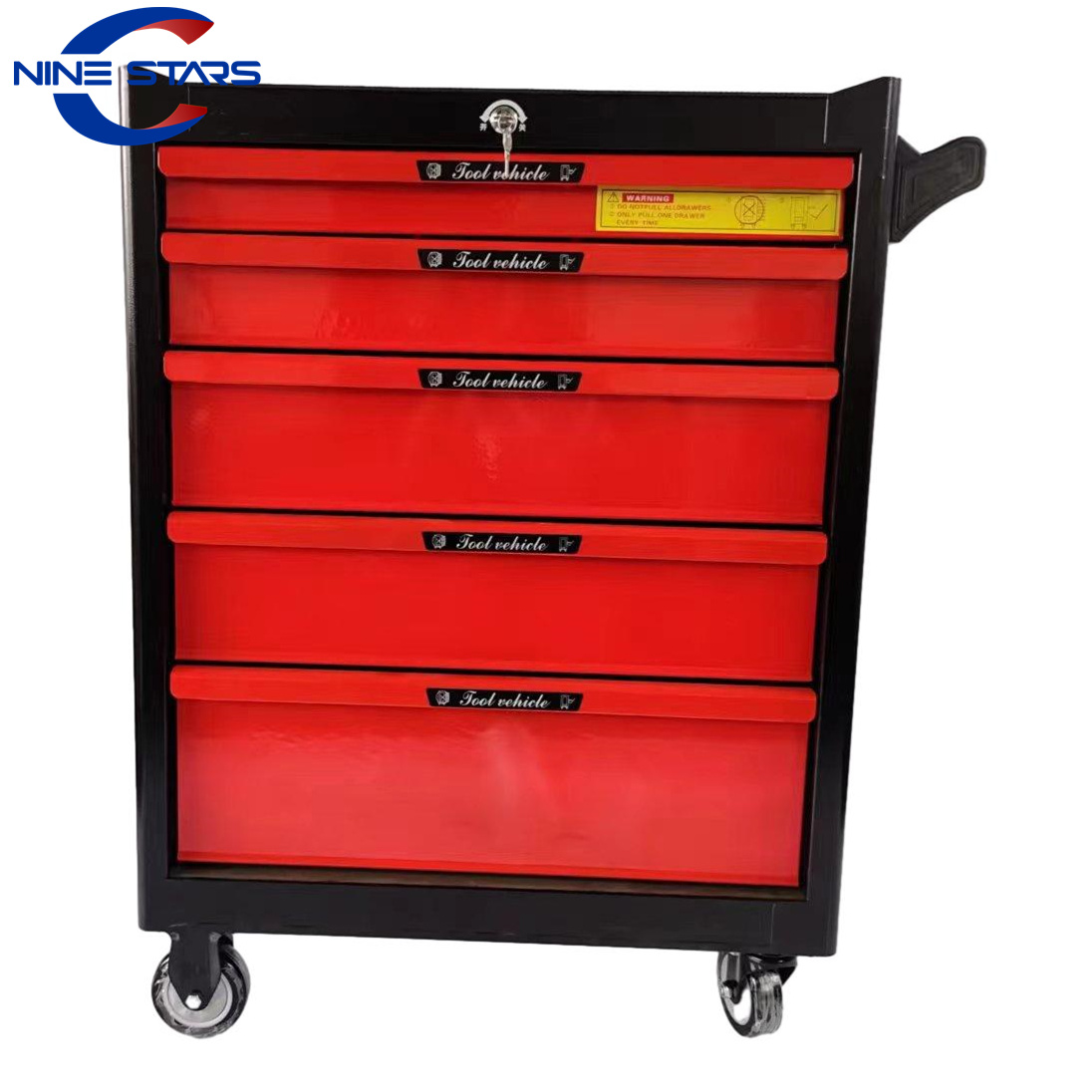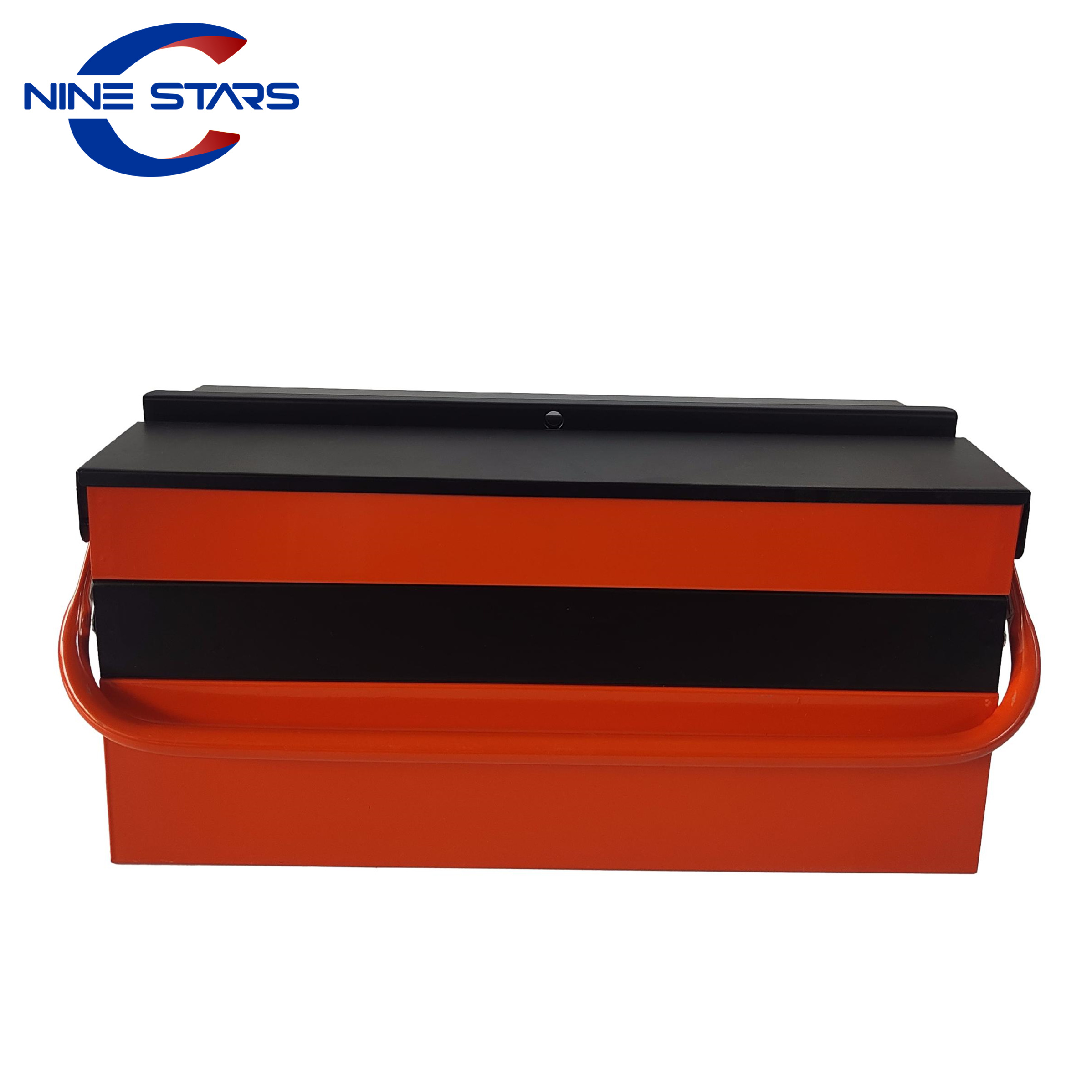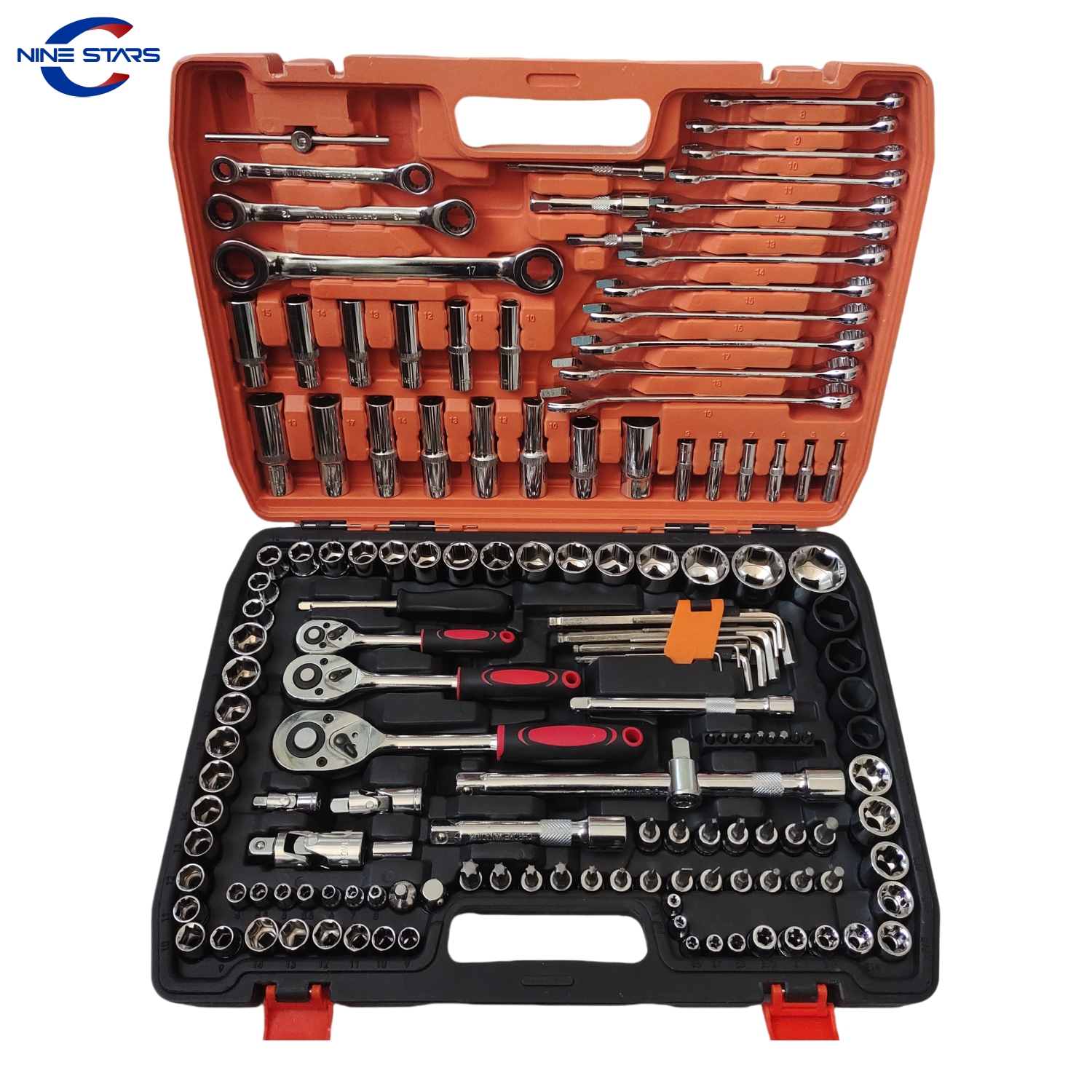Finding the perfect tool storage solution is more than just tidying up; it's about boosting efficiency, protecting your valuable tools, and creating a safer, more organized workspace. Whether you need a large stationary tool cabinet, a mobile tool cart, or a portable toolbox, making the right choice can significantly impact your workflow. As Allen, from a factory specializing in high-quality tool boxes, tool trolleys, and tool cabinets in China, I've seen firsthand how the right storage system transforms how professionals work. This article dives deep into the world of tool storage, exploring different types, essential features, and key considerations to help you select the ideal cabinet or cart for your needs, drawing on our experience supplying durable solutions to clients like Mark Thompson across the USA, Europe, and Australia. We'll cover everything from material choices to drawer quality, ensuring you invest wisely.
What Are the Main Types of Tool Storage Solutions Available?
When you start looking for tool storage, you'll quickly notice a few common categories. First, there's the classic toolbox. These range from small, portable units, often made of plastic or metal, perfect for carrying essential hand tools like a wrench or screwdriver, to larger, stationary tool chest styles. A portable tool box is great for jobs on the go, while a larger toolbox might sit on a workbench. They often feature a main compartment and sometimes a removable tray.
Next up are tool chests. Often, a tool chest refers to a multi-drawer unit designed to sit on a surface, like a workbench or atop a rolling cabinet. They provide more organization and accessibility than a basic toolbox, with multiple drawers for separating items like sockets and smaller tools. You might see configurations like a top chest and a middle chest stacked together for increased storage capacity.
Finally, we have tool cabinets and tool carts. A tool cabinet is typically a larger, rolling unit with multiple drawers, providing significant storage space. They often form the base for a stacked tool chest system. A tool cart, while similar, might offer a mix of drawers, shelves, and a top work surface, emphasizing mobility around a workshop. We manufacture various types, including economical trolleys and heavy-duty tool cabinets with features like 9 drawer options, catering to different needs and budgets. Understanding these basic types of tool storage is the first step in finding your perfect tool solution.

Why is Selecting the Right Tool Storage So Important for My Workspace?
Choosing the right tool storage solution goes far beyond simple neatness; it directly impacts your productivity, safety, and the longevity of your tools. Imagine searching for a specific wrench or socket in a disorganized pile – it wastes valuable time and causes frustration. A well-organized tool cabinet or tool cart ensures every tool has its place, providing easy access and streamlining your workflow. This means less time searching and more time working. For businesses like automotive workshops or construction companies, this efficiency translates directly to profitability.
Furthermore, proper tool storage protects your investment. Tools left lying around are susceptible to damage, rust, and loss. A sturdy tool chest or cabinet shields them from environmental factors and accidental knocks. Secure locking mechanisms, a feature we prioritize in our designs, also prevent theft, which is a significant concern when dealing with expensive power tools or specialized equipment. A lockable cabinet provides peace of mind, especially in shared or busy work environments.
Lastly, an organized workspace is a safer workspace. Tools scattered on floors or benches create tripping hazards. Sharp tools left exposed pose a risk of injury. Using a tool storage system like a tool cart or cabinet keeps pathways clear and tools safely stowed away. This commitment to organization demonstrates professionalism and fosters a safer working culture, reducing the likelihood of accidents. Efficient tool storage is fundamental to a functional and secure work environment.
What Key Features Should I Look For in a Quality Tool Box or Tool Chest?
When evaluating a tool box or tool chest, several key features indicate quality and suitability for your needs. First, consider the construction material and build quality. Look for durable materials like heavy-gauge steel for a tool chest or cabinet, or high-impact resin for a portable plastic toolbox. Check for reinforced corners, sturdy handles, and robust latches. As a manufacturer, we focus on using high-quality iron, plastic, and stainless steel to ensure longevity, even in demanding environments.
Next, examine the drawers and their operation, especially crucial for a tool chest or cabinet. Look for smooth-gliding drawer slides, preferably ball-bearing slides, which handle weight better and offer effortless opening and closing, even when the drawer is full of tools. Consider the drawer depth and layout – a mix of shallow drawers for small hand tools like wrenches and sockets, and larger drawers for power tools or bulkier items, offers versatility. Features like drawer liners are also important; they protect both the tools and supplies inside and the drawer surface itself, preventing items from sliding around.
Finally, consider storage capacity and organization and accessibility. Does the tool box or tool chest offer enough storage space for your current tool collection and potential future additions? Look for features that enhance tool organization, such as dividers, removable trays, or a top chest design with a lid compartment. For a rolling tool cabinet or cart, check the quality of the casters – they should be sturdy and roll smoothly, with at least two locking casters for stability. Thinking about these box features helps ensure you get a tool storage solution that truly meets your requirements for years to come.
Tool Cabinet vs. Tool Chest: What's the Real Difference?
While the terms tool cabinet and tool chest are sometimes used interchangeably, they generally refer to distinct types of tool storage units, often designed to work together. A tool chest (sometimes called a top chest or middle chest) is typically a multi-drawer unit without wheels, designed to sit on a flat surface like a workbench or, more commonly, on top of a rolling tool cabinet. Think of it as the upper part of a potential storage stack, offering drawers for organizing smaller tools like screwdrivers, wrenches, and sockets. They provide easy access to frequently used tools at a convenient height.
A tool cabinet, on the other hand, is usually the larger, rolling base unit. It features wheels (casters) for mobility and typically offers deeper, larger drawers suitable for storing heavier items, power tools, and bulkier equipment. The tool cabinet provides the foundation for a modular storage system, allowing you to stack a tool chest (or multiple chests) on top to maximize vertical storage space. These cabinets often have a sturdy top surface that can sometimes double as a work surface. We produce various sizes, from compact units to large seven-drawer tool cabinets, offering substantial storage capacity.
So, the key difference lies in mobility and typical placement. The tool chest is a stationary upper unit focused on organizing smaller tools, while the tool cabinet is a mobile base unit offering large storage and serving as the foundation. Many professionals, like our customer Mark Thompson might purchase both – a rolling tool cabinet for the base and a matching tool chest to stack on top, creating a comprehensive and efficient tool storage solution for their workspace. Understanding this distinction helps in planning your tool storage setup effectively.
Is a Tool Cart the Best Choice for Mobility and Accessibility?
A tool cart can be an excellent choice if mobility and immediate accessibility are top priorities in your workspace. Unlike a large, stationary tool cabinet primarily designed for permanent storage, a tool cart is built for moving tools directly to the job site within a workshop, garage, or factory floor. Think of automotive technicians needing various wrenches, sockets, and diagnostic tools right next to the vehicle they're working on, or maintenance staff needing tools and supplies across a large facility. The casters on a tool cart are key, allowing smooth movement across different floor surfaces.

Tool carts often feature a combination of storage options. They might have several drawers (similar to a small tool cabinet), open shelves for easy grabbing of frequently used tools or supplies, and a top tray or surface that can serve as a temporary workbench. This blend offers a balance between secure drawer storage and the quick accessibility of open shelves. Some designs, like our Economical Tool Trolley, focus on open shelving for cost-effectiveness and rapid tool retrieval, while others incorporate multiple drawers for better tool organization.
However, a tool cart generally offers less overall storage capacity compared to a full-size tool cabinet or a stacked tool chest/cabinet combination. They are not typically designed for storing an entire tool collection but rather for holding the necessary tools for specific tasks or projects. Consider the tool cart vs tool cabinet debate: if you need maximum storage space and security for a vast number of tools, a cabinet is likely better. But if moving a curated tool set around your workspace frequently is essential for your workflow, a tool cart provides unmatched convenience and easy access to tools.
What Materials Offer the Best Durability for Tool Cabinets and Carts?
The durability of your tool cabinet or tool cart largely depends on the materials used in its construction. For heavy-duty applications, steel is the go-to choice. High-gauge steel provides excellent strength and rigidity, capable of supporting heavy loads of tools without warping or buckling. Look for powder-coated finishes on steel cabinets and carts, as this provides superior resistance to rust, scratches, and chemical spills commonly found in workshops. As a manufacturer exporting to demanding markets like the USA and Europe, we ensure our steel tool cabinets meet high standards for toughness and longevity.
Stainless steel is another premium option, offering exceptional corrosion resistance, making it ideal for environments with high humidity or exposure to corrosive substances. While often more expensive, a stainless steel tool box or cabinet provides a sleek look and is easy to clean. We offer options like our Green Stainless Steel Tool Box for those prioritizing rust prevention and a professional appearance.
For lighter-duty applications or enhanced portability, high-impact plastics or reinforced polymers are common, especially for smaller tool boxes and some tool carts. Modern plastics can be surprisingly strong and resistant to dents and rust. Reinforced plastic tool boxes offer a good balance of durability and weight savings. However, for storing very heavy large tools or for maximum security in a tool cabinet or large tool chest, steel generally remains the preferred material due to its inherent strength and resistance to forceful entry. The choice depends on your specific needs, budget, and working environment.
How Crucial Are Drawer Quality and Configuration in a Tool Cabinet?
Drawer quality and configuration are absolutely crucial aspects of any tool cabinet or tool chest; they directly impact usability, organization, and the lifespan of the unit. Poorly constructed drawers that stick, sag, or derail are a constant source of frustration and can even be a safety hazard if they fall out when loaded. High-quality drawer slides, particularly ball-bearing types, are essential. They ensure smooth movement even under heavy loads, making it easy to access tools stored at the back of the drawer. The weight rating of the slides is also important – heavier-duty slides are necessary for drawers intended to hold power tools or many heavy wrenches and sockets.
The configuration – the number, size, and depth of the drawers – determines how effectively you can organize your tool collection. A good tool cabinet will offer a mix of drawer sizes. Shallow drawers (sometimes called small drawers) are perfect for organizing hand tools like pliers, screwdrivers, and metric tools, allowing items to be laid out neatly without stacking. Deeper, larger drawers are needed for bulkier items, power tools, and tool cases. Having a variety allows for better organization and prevents wasted storage space. Consider units like an 8 drawer or 9 drawer cabinet for ample organizational options.
Furthermore, features within the drawers enhance functionality. Drawer liners, typically made of foam or rubber, prevent tools from sliding around, reducing noise and protecting both the tools and the drawer surface. Some users opt for custom foam inserts for precise tool organization. The presence of detents (which help keep drawers closed) and a reliable locking system that secures all drawers simultaneously are also important quality indicators. Investing in a tool cabinet with well-designed, durable drawers significantly improves organization and accessibility, making your workspace far more efficient.

What Security Features Are Must-Haves for Storing Tools Safely?
Security is a major concern when investing in tool storage, especially for valuable power tools and specialized equipment. The most fundamental security feature is a reliable locking system. Look for tool cabinets and tool chests with an integrated lock that secures all drawers simultaneously with a single key turn. Internal locking mechanisms, where the lock bars are inside the cabinet body, offer better protection against tampering than external padlocks on some cheaper tool boxes. Cylinder locks are common and offer decent security, but higher-end cabinets might feature tubular locks, which are generally considered more difficult to pick.
The construction of the tool cabinet or tool chest itself contributes to security. Heavy-gauge steel is harder to breach than thin metal or plastic. Reinforced frames and welded seams add structural integrity, making the unit more resistant to forced entry. Ensure the drawers themselves close securely and cannot be easily pried open when locked. For portable tool boxes, sturdy latches that can accommodate a padlock are essential.
Beyond the lock and build quality, consider where the tool storage unit will be kept. A rolling tool cabinet should have locking casters to prevent it from being easily wheeled away. In a shared workspace, positioning the cabinet in a visible or monitored area can deter theft. While no system is completely impenetrable, choosing a tool cabinet or tool chest with robust construction and a quality locking mechanism provides a significant deterrent and essential protection for your valuable tools and supplies. Ensuring the unit is lockable is non-negotiable for professionals.
How Can I Maximize Organization Within My Tool Storage Unit?
Owning a great tool cabinet or tool chest is only half the battle; maximizing its potential requires smart tool organization. The goal is easy access to tools and ensuring everything has a designated spot. Start by utilizing the different drawer sizes effectively. Place frequently used tools like screwdrivers, wrenches, and common sockets in the upper, shallower drawers for quick retrieval. Reserve the larger drawers at the bottom of a tool cabinet for heavier items and power tools. Group similar tools together – all pliers in one section, all hammers in another.
Leverage organizational aids within the drawers. Drawer liners are essential to stop tools from sliding, but consider going further. Foam inserts, either pre-cut or customizable, provide dedicated cutouts for each tool, offering the ultimate organization and showing immediately if something is missing. Simple plastic drawer dividers or small bins can also work well for separating small items like fasteners, bits, or small hand tools. Don't overlook the top of the tool cabinet or tool chest lid compartment – these are often good spots for chargers or frequently used manuals.
Think vertically and consider additions. If your main tool cabinet is getting full, adding a side cabinet or a top chest can provide much-needed storage space without taking up more floor area. Pegboards mounted above the workbench or on the side of a cabinet are great for hanging tools that need immediate accessibility. Regularly purging tools you no longer use also helps maintain order. Consistent using a tool organization strategy within your cabinet, cart, or toolbox saves time, reduces frustration, and helps you work more efficiently.

Making the Final Decision: Tool Cabinet, Cart, or Toolbox for Your Needs?
Choosing between a tool cabinet, tool cart, or toolbox ultimately depends on several factors to consider: the size of your tool collection, your workflow, workspace constraints, and budget. If you have a large number of tools, including heavy power tools, and require secure, stationary storage capacity, a substantial tool cabinet (possibly paired with a tool chest) is likely your best tool storage solution. It offers great storage, excellent organization potential with its multi-drawer design, and robust security. Think of it as the central hub for your tools.
If your work requires constantly moving tools around a large area – like an auto repair shop or a factory floor – a tool cart offers unparalleled mobility and accessibility. While providing less overall storage space than a large cabinet, its ability to bring essential tools directly to the task saves significant time. Look for a tool cart with a good balance of drawers and shelves, plus sturdy casters. It’s about having the right tools readily available where you need them. For comprehensive needs, consider a complete package like our 151 Pcs Tool Kit which often comes in a durable case that might fit within a larger cabinet or cart.
For those with a smaller tool collection, needing portability for off-site jobs, or just starting, a toolbox is often sufficient. Tool boxes are a great starting point, ranging from small portable plastic cases to larger metal cantilever boxes like our Folding Tool Box. They offer basic tool organization and transportability. Often, professionals will have multiple storage types: a main tool cabinet at their primary workbench, a tool cart for mobile tasks, and several smaller tool boxes for specific jobs or travel. Assess your primary needs honestly to make the most appropriate choice for efficient tool storage.
Key Takeaways for Choosing Tool Storage:
- Identify Your Needs: Determine if you need high-capacity stationary storage (tool cabinet / tool chest), mobile access (tool cart), or portability (toolbox).
- Material Matters: Choose heavy-gauge steel for maximum durability and security in cabinets and chests. Stainless steel offers corrosion resistance. Quality plastic is suitable for lighter tool boxes.
- Drawer Quality is Crucial: Look for smooth ball-bearing drawer slides, appropriate weight ratings, and useful configurations (mix of shallow and deep drawers) in any tool cabinet or chest.
- Prioritize Security: Ensure your tool storage has a reliable internal locking mechanism, especially for valuable tool collections and power tools. A lockable unit is essential.
- Mobility Features: If choosing a tool cart or rolling cabinet, check for sturdy, smooth-rolling casters, preferably with locking mechanisms.
- Organization is Key: Utilize drawer liners, dividers, or foam inserts to keep tools organized and easily accessible within your cabinet, cart, or toolbox.
- Consider Future Growth: Select a storage system with slightly more storage capacity than you currently need to accommodate future additions to your tool set.
- Combine Solutions: Often, the best approach involves using multiple types of tool storage (e.g., a main cabinet, a mobile cart, and task-specific tool boxes) to cover all needs.
By carefully considering these points and understanding the different types of tool storage available, you can confidently select the tool cabinet, tool cart, or toolbox that will best serve your workspace for years to come.
Post time: 04-21-2025



